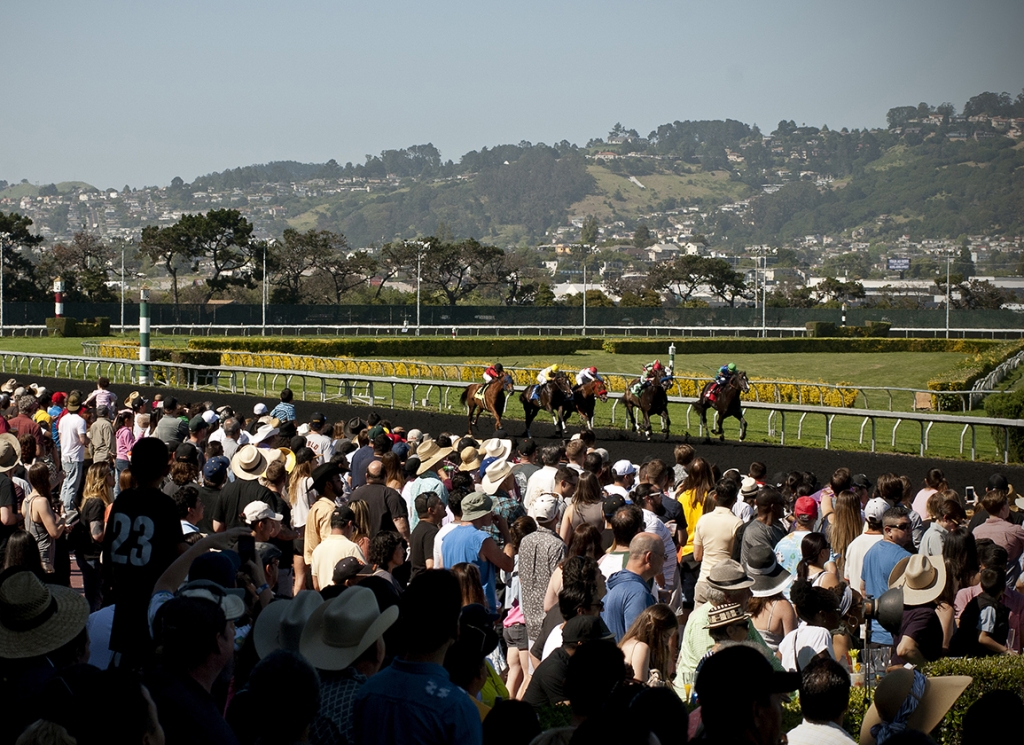Over a week has passed since The Stronach Group (TSG) announced with a short statement light on detail the closure of Golden Gate Fields at the end of the year–a momentous decision that figures to upend a way of life for so many in California.
Since then, the company has remained publicly mum on the reasons behind the closure, and its vision for the future.
Every day since the announcement, the TDN has submitted a series of questions, to which TSG has responded only once. “For now, the [Sunday] statement is going to be our comment around the story. We look forward to being in touch in the future about our plans,” wrote Stefan Friedman, a TSG spokesperson, last Monday.
The silence is troubling for the thousands of breeders, trainers, owners, grooms, hotwalkers and phalanx of individuals attempting to make a living from horse racing in the state.
With the clock racing towards the end of the year–when many will pack up bag and box, van and car, to start life anew on Christmas Eve–they face stark decisions about their professional futures and personal lives.
Do they try to make a go of it in Southern California, or do they ply their trade in another state? What's best for their families? What kind of investments should they be making at this year's sales? How do they shape their breeding plans for next year? And what kind of industry will exist to justify such investments?
These are tough questions to grapple with at the best of times–much harder still beneath a veil of uncertainty and not a little fear. The edifice of any successful racing operation is built upon foundation stones laid years, decades sometimes, in advance.
With this in mind, the TDN is publishing the questions submitted each day to TSG, and again asking when can stakeholders expect the answers they need to make those long-term business decisions that ensure this industry's future.
1 – It appears that TSG didn't give all the relevant stakeholders much (if any) of a prior warning before making the announcement. If that is indeed the case, why did TSG decide to make the announcement in this abrupt fashion?
2 – How many horses does TSG expect to be relocated to Santa Anita from GGF? And has TSG spoken with the connections of those horses about possibly making the move?
3 – Many of the horses at Golden Gate don't seem an obvious fit for the Santa Anita/SoCal circuit. Is TSG concerned that fewer horses than expected will make the move? Is TSG prepared to offer cheaper claiming races at SA (cheaper than $10,000) to accommodate the lower-level horses currently stabled at GGF?
4 – What was the reason for closing GGF? Are they economic reasons? If not, are the reasons to do with the recently proposed Berkeley City Council ordinance? Or are they a combination of factors?
5 – Did the economics from Computer Assisted Wagering (CAW) play any part in the decision to close GGF?
6 – Furthermore, TDN understands that the GGF purse account was in deficit to the tune of around $1.9 million. Did this play a part in the decision to close GGF? If so, is Santa Anita's purse account in the red or black?
7 – Is it true the state is stepping in to turn GGF into a park?
8 – What are TSG's thoughts about CARF's proposal to make Cal Expo a year-round hub of racing in the north?
9 – What specific long-term plans does TSG have for Santa Anita? Will TSG be making any substantial financial investments into the property, to show stakeholders that the company is sincere about the long-term viability of the facility?
10 – On top of that, will TSG be making any investments in the Santa Anita backstretch–in particular, to vastly improve living conditions for the backstretch workers living there?
11 – Does TSG intend to purchase the Arizona Downs facility?
12 – Will TSG extend GGF's closure date to accommodate the needs of California industry stakeholders in making the necessary adjustments to their businesses?
The post Open Letter To The Stronach Group: Where Are The Answers? appeared first on TDN | Thoroughbred Daily News | Horse Racing News, Results and Video | Thoroughbred Breeding and Auctions.


